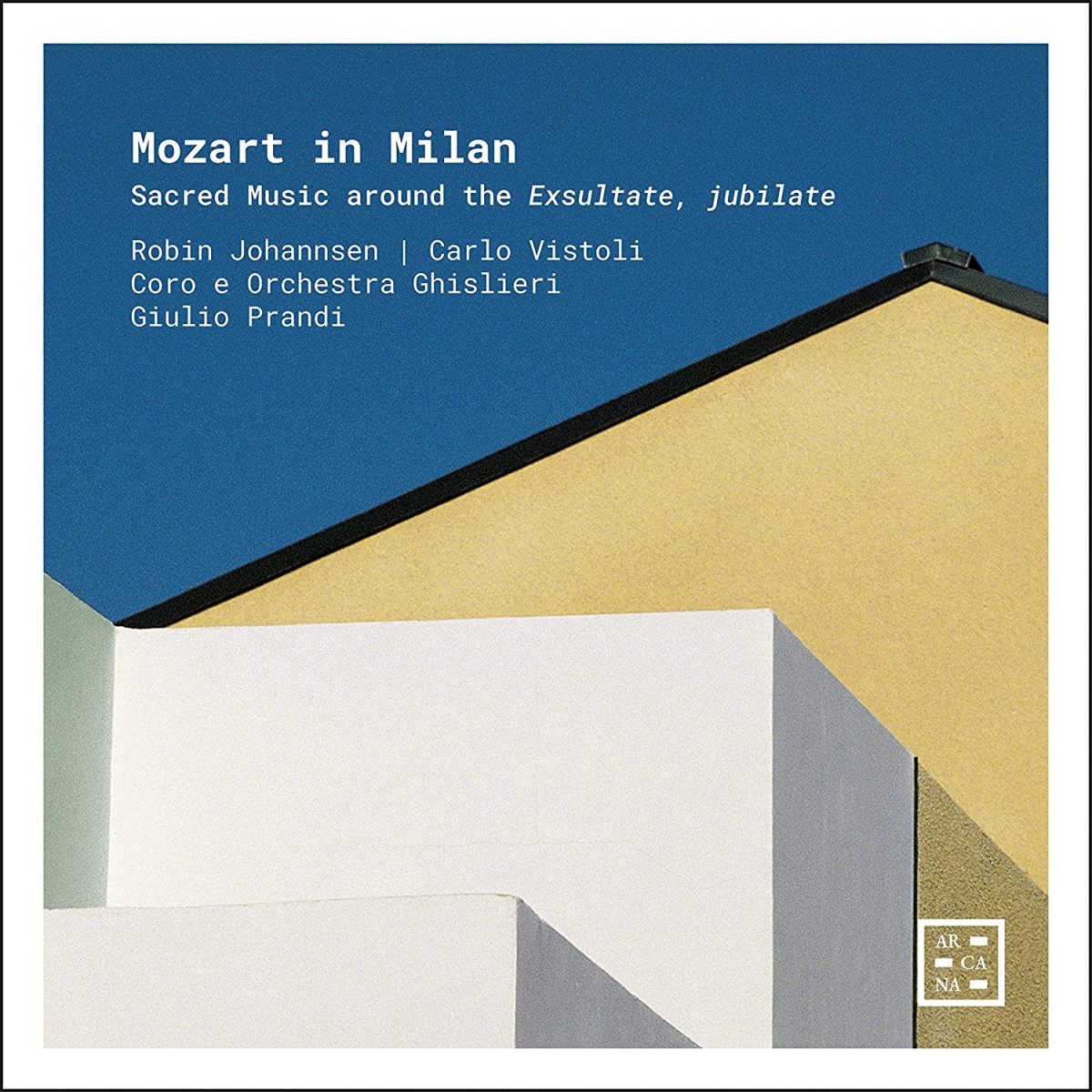Robin Johannsen soprano, Carlo Vistoli countertenor, Coro e Orchestra Ghislieri, conducted by Giulio Prandi
76:58
Arcana A 538
‘Mozart in Milan’ the cover modestly announces. Modestly because it’s not just Mozart. This excellent and well-filled disc also contains works by Johann Christian Bach, who as a young man spent some years in Italy, where he became a Roman Catholic. Of specific interest is the period he spent in Milan (1757-62) under the patronage of Count Agostino Litta and remote tutelage by the famous authority on counterpoint, Padre Martini of Bologna. Then there is the scarcely known Giovanni Andrea Fioroni, a native of Pavia appointed maestro di cappella of Milan Cathedral in 1747, and the even more obscure Melchiorre Chiesa, maestro al cembalo at the Regio Ducale theatre and later La Scala in addition to holding a number of posts as an organist.
We know from an admiring letter of Leopold Mozart that Chiesa took over as second harpsichordist after Mozart ceased to direct his new opera Mitridate (of which in keeping with the custom of the day he directed only the first three performances) at the Reggio Ducale in December 1770. Mitridate was the first product of a commission received by the teenage Mozart from Count Firmian, Governor-General of Lombardy – Milan then being in territory ruled by the Habsburgs – for three operas, the last of which was Lucio Silla, first performed in December 1772. It was for the leading man of Lucio Silla, the famous castrato Venanzio Rauzzini, that a couple of weeks later Mozart wrote the motet Exsultate, jubilate, K165. The motet is here sung by the US soprano, Robin Johannsen. Charles Burney’s description of Rauzzini as having a ‘sweet and extensive voice, a rapid brilliance of execution great expression and an exquisite and judicious taste’ might easily have been tailored to Johannsen’s performance, which is, quite simply, one of the very best of this frequently performed showpiece I have heard. The ability to cope with the bravura writing of the opening aria and concluding ‘Alleluja’ are not so uncommon, but what is rare is the care and insight Johannsen brings to colouring the text. One example must suffice; the final line of the second, lyrical aria concludes with a perfectly executed trill on the final word ‘cor’, which the singer allows to swell slightly, thus bringing added fervour to the final plea – ‘console our feelings from which our hearts sigh’.
It would be interesting to know the date of composition of Chiesa’s solo motet for alto, Caelo tonati, for it follows precisely the same form as Exsultate, jubilate, which is to say a bravura aria followed by a recitative and concluded by a cantabile largo and Alleluja. The text takes the familiar operatic metaphor of stormy seas to express the torments of the sinful soul, the second aria a plea for peace and light. If lacking the musical quality of the Mozart, it makes for a fine virtuoso showpiece, here receiving its first recording. It is sung with great accuracy and intensity by countertenor Carlo Vistoli, whose performance would be a match for Johannsen’s if he had a less approximate, more sustained trill. As it is, there is much left to admire in the astonishing bravura singing, especially the ornamentation and passaggi of the recap of the opening aria.
The J C Bach works are Vespers pieces, the composition of which was overseen by Padre Martini and first performed in Milan, a Dixit Dominus of 1758, and a Magnificat in C from 1760, one of three settings Bach made of the text during this period. The former is also a first recording. They combine contrapuntal passages with homophony and have a typical layout, being divided into a succession of movements, in the case of Dixit clearly demarcated into choral and solo aria movements, while the Magnificat employs a concertante solo SATB group that emerges from the chorus. Both are highly attractive pieces, displaying Bach’s familiar Rococo melodic elegance grace in abundance.
Finally, we have a pair of brief choral works. Mozart’s Misericordias Domini, KV 222/205a is an Offertory work composed in Munich for the first Sunday of Lent in 1775. Consisting of only two lines of text, it alternates between the strict chromatic counterpoint of the first and the more lyrical homophony of the second. Fioroni’s even briefer O sacrum convivium is a largely homophonic setting of the sacramental antiphon with piquant harmonies, its reverential restraint fully justifying the esteem accorded the composer and suggesting his large sacred output would benefit from further exploration.
All these choral works are given thoroughly accomplished and committed performances by Coro Ghislieri under its experienced founder and director, Giulio Prandi. In the Bach Dixit Dominus, the tenor and bass soloists are respectively Raffaele Giordani and Alessandro Ravasio, the latter particularly impressing in the aria ‘De torrente’, sung with secure tone, excellently articulated fioritura and concluding with an almost unheard of rarity – a finely executed trill by a bass. An exceptionally rewarding CD that will fully engage the attention of anyone interested in mid-18th-century sacred music.
Brian Robins
